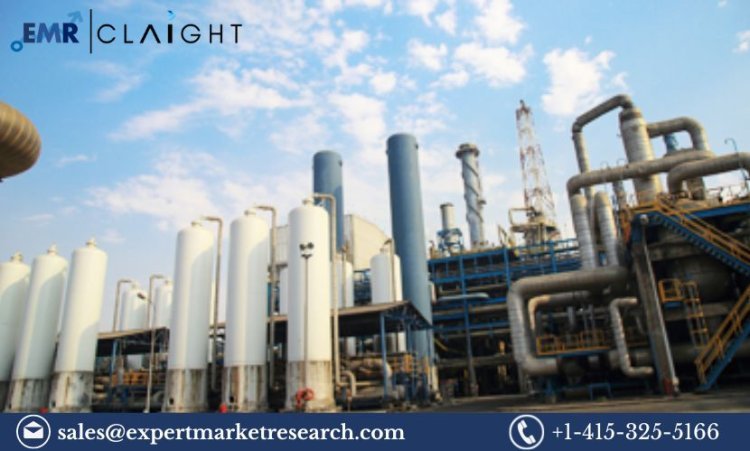Argon Gas Manufacturing Plant Project Report 2024: Industry trends and Plant Setup
This report outlines the establishment of an argon gas manufacturing plant, focusing on efficient production, quality assurance, and sustainability.

Introduction
Argon gas, an inert and colorless gas, is the third most abundant gas in the Earth’s atmosphere, making up about 0.93% by volume. It has a wide range of applications, from industrial processes to medical uses and even in the production of lighting. The establishment of an argon gas manufacturing plant offers an opportunity to harness this abundant resource efficiently while meeting growing market demands. This Argon Gas Manufacturing Plant Project Report outlines the objectives, manufacturing processes, market analysis, sustainability strategies, and community engagement initiatives related to the project.
Project Objectives
The primary objectives of the argon gas manufacturing plant project include:
-
Efficient Production: To develop a streamlined process for extracting and purifying argon gas from the atmosphere or other sources.
-
Quality Assurance: To ensure that the argon produced meets industry standards for purity and safety.
-
Market Expansion: To identify and capture emerging opportunities in sectors such as welding, pharmaceuticals, and food packaging.
-
Sustainability Practices: To implement environmentally responsible practices throughout the manufacturing process.
-
Community Engagement: To involve local communities in the project, addressing any concerns and highlighting potential benefits.
Get a Free Sample Report with Table of Contents @
Manufacturing Process
The production of argon gas typically involves several key stages:
1. Air Separation
The primary method for obtaining argon gas is through air separation. This process can be conducted using one of two main technologies:
-
Cryogenic Distillation: This method involves cooling air to very low temperatures to liquefy it, then separating the components (nitrogen, oxygen, and argon) based on their boiling points. Argon, which has a boiling point of -185.8°C, can be isolated as a liquid and subsequently vaporized into gas.
-
Pressure Swing Adsorption (PSA): This technology uses adsorbent materials to selectively trap oxygen and nitrogen, allowing argon to be collected in a gaseous state. PSA is often preferred for smaller-scale operations due to its lower energy requirements.
2. Purification
Once argon gas is separated, it undergoes a purification process to remove any contaminants. This can include:
- Filtration: Removing particulates and impurities through mechanical filters.
- Additional Adsorption: Using specialized materials to adsorb trace gases and ensure high purity levels.
3. Storage and Distribution
After purification, argon gas is compressed and stored in high-pressure cylinders or tanks. Proper storage is essential to maintain the gas's quality and safety. Distribution channels are established to ensure timely delivery to various industries, including manufacturing and healthcare.
Market Analysis
1. Target Markets
The primary markets for argon gas include:
- Welding and Fabrication: Argon is extensively used as a shielding gas in welding processes to protect welds from oxidation.
- Medical Applications: Utilized in various medical devices and procedures, including cryotherapy.
- Food Packaging: Employed in modified atmosphere packaging to preserve food quality by displacing oxygen.
2. Demand Trends
The global demand for argon gas is steadily increasing, driven by:
- Industrial Growth: Expanding manufacturing sectors require argon for various processes.
- Technological Advancements: Innovations in welding and fabrication techniques are boosting the need for high-purity argon.
- Healthcare Expansion: Increased use of argon in medical applications contributes to rising demand.
3. Competitive Landscape
The argon gas market is competitive, with several established players. Understanding the competitive landscape is crucial for effectively positioning the new plant. Differentiation through quality, pricing, and customer service will be key strategies.
Sustainability Strategies
Implementing sustainable practices is essential for the argon gas manufacturing plant. Key initiatives may include:
- Energy Efficiency: Utilizing energy-efficient technologies in the air separation and purification processes to minimize energy consumption.
- Waste Management: Developing strategies to recycle and minimize waste generated during production.
- Emissions Control: Implementing systems to monitor and reduce emissions, ensuring compliance with environmental regulations.
Community Engagement
Building a positive relationship with the local community is vital for the success of the project. Strategies may include:
- Informational Campaigns: Hosting workshops and community meetings to educate the public about the plant’s operations and benefits.
- Job Creation: Highlighting employment opportunities the plant will create, contributing to the local economy.
- Feedback Mechanisms: Establishing channels for community members to voice concerns and provide input on plant operations.
FAQ
1. What is argon gas?
Argon is a colorless, odorless, inert gas that makes up about 0.93% of the Earth's atmosphere. It is widely used in industrial processes, medical applications, and food preservation.
2. How is argon gas manufactured?
Argon gas is primarily produced through air separation, which can be achieved via cryogenic distillation or pressure swing adsorption (PSA) methods.
3. What are the main applications of argon gas?
Argon is commonly used in welding and fabrication, medical applications, and food packaging to preserve freshness.
4. What sustainability practices will the plant implement?
The plant will focus on energy efficiency, waste management, and emissions control to minimize its environmental impact.
5. How will the community be involved in the project?
The project will engage with the local community through informational campaigns, job creation initiatives, and feedback mechanisms to address concerns and foster positive relationships.
6. What are the demand trends for argon gas?
The demand for argon gas is increasing due to industrial growth, technological advancements in welding, and expanded healthcare applications.
Related Reports
https://www.expertmarketresearch.com/reports/united-states-augmented-and-virtual-reality-market
https://www.expertmarketresearch.com/reports/immersion-cooling-market
https://www.expertmarketresearch.com/reports/automotive-fabric-market
Media Contact:
Company Name: Claight Corporation
Contact Person: Lewis Fernandas, Corporate Sales Specialist — U.S.A.
Email: sales@expertmarketresearch.com
Toll Free Number: +1–415–325–5166 | +44–702–402–5790
Address: 30 North Gould Street, Sheridan, WY 82801, USA
Website: www.expertmarketresearch.com
Aus Site: https://www.expertmarketresearch.com.au
What's Your Reaction?















